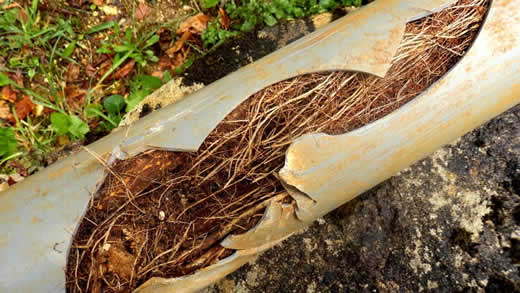Clay piping has a long history. There are examples of clay pipe dating back as far back as 4000 B.C. in Babylonia. Various types of clay pipe have been used to make sewer lines ever since. The newest Vitrified clay pipe has a ceramic like finish, is strong and fits tighter at the joints than the older clay piping but ask anyone involved in plumbing services and they will tell you it is harder to work with than PVC and it’s very heavy, requiring heavy hauling trucks to move it around.
Clay pipes, sometimes called terra cotta, are very susceptible to root intrusion and leaks. Once those tiny tree roots invade the pipe via a loose joint, the roots grow bigger and eventually break away the clay much like tree roots raise concrete sidewalk panels. Old crumbling clay pipes are responsible for many plumbing problems in homes and businesses across the country, resulting in expensive sewer repair work and plenty of business for plumbing contractors.
It is surprising how much clay sewer pipe is still in service today, though not very reliably. Traverse City businesses and residents still deal with clay piping in older buildings. Roto-Rooter of Northern Michigan replaces it daily with more reliable PVC and other materials that last longer while resisting leaking and root intrusion.
Having issues and suspect clay piping? Give us a call to schedule a camera line sewer inspection to see if you are dealing with clay piping.


